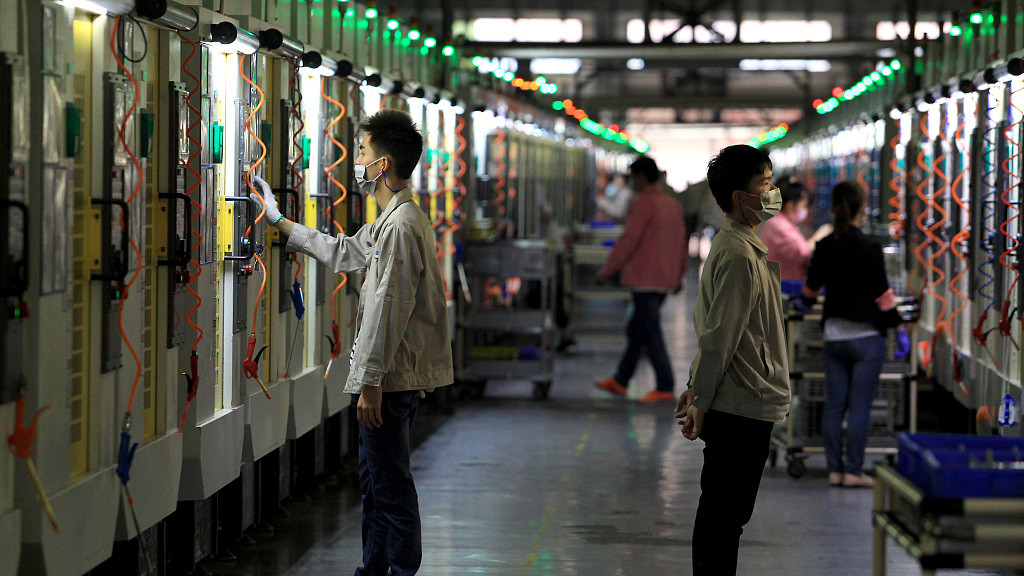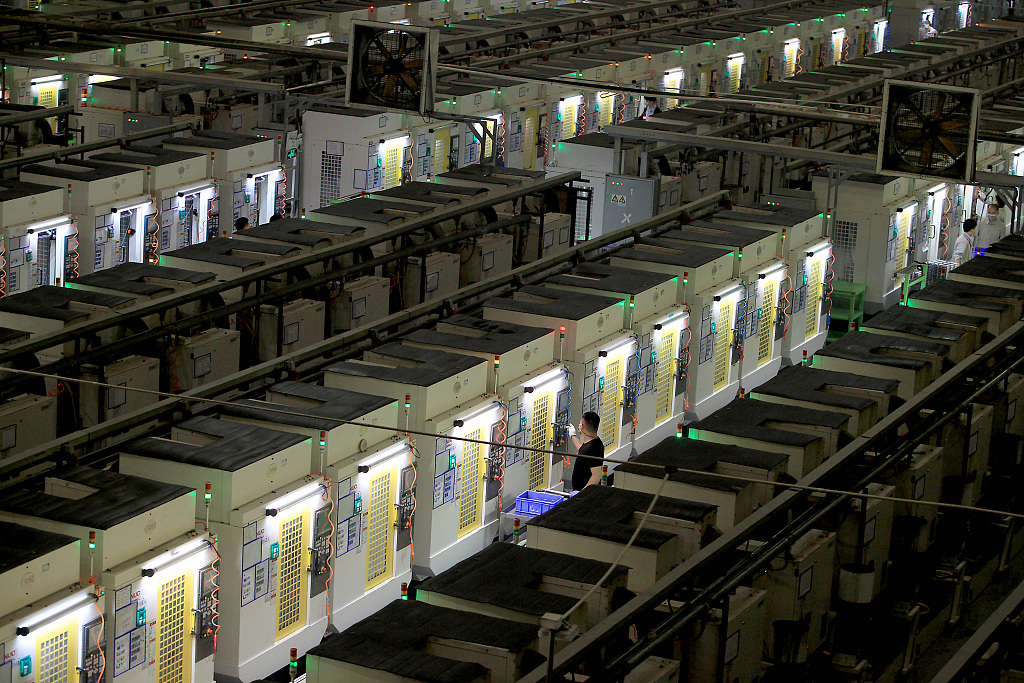

Editor's note: Ken Moak taught economic theory, public policy and globalization at the university level for 33 years. He is co-author of a book titled "China's Economic Rise and Its Global Impact" in 2015. The article reflects the author's opinion, and not necessarily the views of CGTN.
Western pundits often wrote that rising wages in China would drive many foreign investors out of the country to other developing nations or even back to the U.S. Adding to that theory is U.S. President Donald Trump boasting China is “begging” for a trade deal because his tariffs are “decimating” the Asian giant’s manufacturing factories as companies are leaving China to avoid tariffs. However, both theories might be more fantasy than reality.
U.S. (and other foreign) firms invested in China for a reason, that is it’s increasingly huge affluent market and manufacturing comparative advantage. China’s manufacturing comparative began with the first-generation leadership’s investment in vocational training to achieve industrialization. That policy culminated in China acquiring a pool of skilled labor capable of tackling manufacturing tasks.
The reason the U.S. and Japan agreed to sell China their technology was, in large part, due to its large population, whom they saw as a potential market for U.S. and Japanese products.
Having observed the overseas Chinese’s work ethic, entrepreneurial spirit and value for education, U.S. and Japanese political and business leaders correctly predicted that Deng Xiaoping’s reform policies would unleash the same forces among the Chinese population (and they did), the major reason why China became the second largest economy and biggest trading nation in the world today.

A smart phone metal-outer-parts automated assembly line at Everwin Precision Technology Company's manufacturing factory in Dongguan, Guangdong Province, May 10, 2019. /VCG Photo
Today, China is the biggest trade partner to over 120 countries around the world, including the U.S. and Japan. It is one of if not the most important market for many American, EU and Japanese enterprises, including General Motors, Boeing, Toyota, Airbus, etc. perhaps because few, if any, developing countries could produce a high-quality product at a cost less than that of China.
Very few, if any, businesses would abandon an economy with efficient production means and huge purchasing power to buy their goods. What’s more, it is doubtful that many, if any, developing nations could wrestle foreign investment from China.
China as a strong competitor for foreign investment
Even with Trump’s tariffs, China still stands as a strong competitor for foreign investment.
As the Chinese government invests heavily in education, infrastructures, research and development, they have in turn improved the country’s competitiveness, defined by the World Economic Forum (WEF) as a “set of institutions, policies and factors (i.e. infrastructure, education, etc.) that determine the level of a country’s productivity."
The World Economic Forum's Global Competitiveness Index (GCI) ranked China 27th out of 137 nations in the 2017-2018 period at 5.0, putting it near that of the developed nations, estimated between 5 and 5.9.

The High End Optoelectronic Chip Innovation Center in Tianjin, China, October 17, 2018. /VCG photo
Indeed, many foreign investors found producing in other developing economies “frustrating,” in part, because of their woefully inadequate infrastructures. Roads and railways were unable to handle the heavy volume of traffic. Electrical power needed to run the factories was unreliable, causing sporadic if not frequent power shortages. There is no supply chain from which the investor could source parts. In light of the GCI report, it would appear that the majority of workers in the developing nations were inadequately trained for high-technology manufacturing tasks such as computers.
Tariffs might not cause U.S. firms to leave China
Trump’s major theory for imposing tariffs on Chinese “imports” is to make the goods so expensive that U.S. investors would leave the country, producing elsewhere or even returning to the U.S.
However, relocating production elsewhere is easier said than done. Indeed, America itself has lost many of its factories due to its businesses community’s relocation production abroad. For example, Taiwan’s Foxconn is reported to have difficulties in finding enough skilled workers for its yet to be completed U.S. factory in Wisconsin.
It could take years to find a developing nation or for the U.S. to build factories, infrastructures and acquire a set of skilled labor to replace China. By then, the U.S.-China trade might have ended, relegating his theory to the “dustbin of history.”
Further, China’s increasingly affluent huge market is too lucrative to pass. Its population of almost 1.4 billion people incurs relatively low debts, and high savings suggest the Chinese market would be able to buy large quantities of foreign goods produced in the country.
Although the GDP growth of the Chinese economy is slowing down, it remains the “beacon” of the world economy, contributing to around 30 percent of the global economic growth. What’s more, the government has the fiscal and monetary toolkit to sustain these rates, making U.S. and other foreign firms unwilling to abandon the Chinese market.
A recent CNBC report revealed that 600 American firms are urging Trump to end the trade war against China, demonstrating its importance as a “factory” and market.
Further, other foreign investors are stepping up their production in China in light of a United Nations report that Chinese inbound foreign investment increased by 3.7 percent from 2017 to 139 billion U.S. dollars in 2018. In contrast, those of the U.S. and EU dropped substantially.
In short, it takes more than rising wages and tariffs to “decimate” China’s factories.
(If you want to contribute and have specific expertise, please contact us at opinions@cgtn.com.)

Copyright © 2018 CGTN. Beijing ICP prepared NO.16065310-3
Copyright © 2018 CGTN. Beijing ICP prepared NO.16065310-3